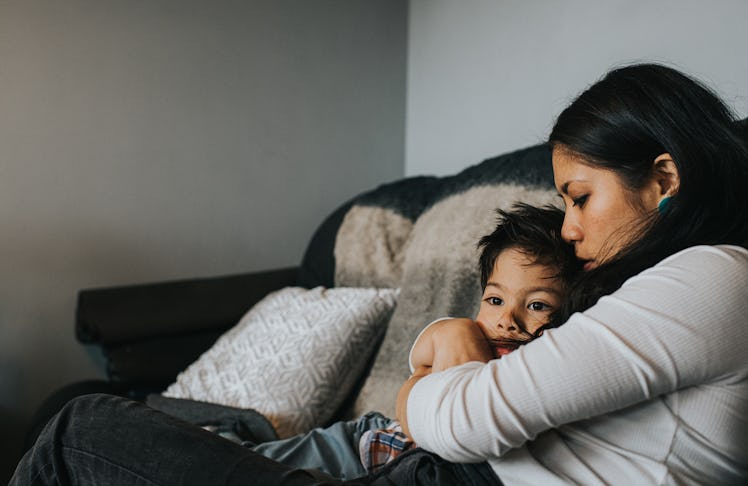Anxiety In Children: How Parents Can Identify The Signs And Help Kids Cope
It's crucial parents understand anxiety in kids so they can help — whether that means therapy, medication, or developing new coping skills.

Every child experiences anxiety on occasion, and in times of familial stress and widespread uncertainty, even healthy children are more susceptible to persistent worrying. Some children, however, routinely experience those fears — and may be quietly holding on to their anxiety and suffering in silence; what appears as reticence or shyness may in fact be an anxiety disorder. It is crucial that parents understand the warning signs of anxiety in children and respond appropriately, which may require seeking medical assistance.
Childhood mental health issues are surprisingly common. According to the Child Mind Institute some 17 million American children have been diagnosed with a psychiatric disorder, with 75 percent of those illnesses occurring before age 14. Anxiety disorders are, by far, the most common and account for about half of these psychiatric conditions. Studies suggest up to 80 percent of children with anxiety disorders are not receiving treatment. Part of the problem may be the tender age at which anxiety first manifests. Unlike ADHD and mood disorders, conditions that usually show up in the early teen years, the median age of onset for anxiety disorders in children is 6 years old.
Childhood anxiety disorders comprise a family of psychiatric conditions, and impact children’s lives in different ways. Generalized Anxiety Disorder (GAD), one of the most difficult to diagnose, is characterized by excessive worry about grades, family issues, relationships with peers, or performance in sports. It can be difficult to distinguish GAD from perfectionism, or simple conscientiousness but, as with most psychiatric disorders, the diagnosis comes down to a question of quality of life. If a child is suffering from the drive to succeed, GAD is a possibility.
More specifically, children may suffer from panic disorders (at least two unexpected panic or anxiety attacks, followed by at least one month of concern over having another attack), separation anxiety disorder (when a child is unable to leave a family member), and social anxiety disorder (intense fear of being called on in class, or starting a conversation with a peer). In extreme cases, children with anxiety disorders may suffer from selective mutism and intense phobias. Obsessive-compulsive disorder and posttraumatic stress disorder, while not traditionally considered anxiety disorders, are often associated with the more extreme cases.
Cognitive behavioral therapy is the preferred treatment method for anxiety disorders, because it is not particularly invasive and, in children, has particularly high rates of success. Therapy usually involves identifying and interrogating unhealthy patterns of thinking, and teaching children strategies to conjure more positive thoughts and feelings in their stead.
If therapy is ineffective, or a child has a particularly severe case of anxiety, prescription medications (usually selective serotonin reuptake inhibitors, or SSRIs) are an option. Studies suggest that therapy and antidepressants, together, can be more effective than either treatment in isolation.
Awareness is the key to protecting your children, and ensuring that those who are suffering actually get help. “Parents should not dismiss their child’s fears,” according to a statement from the American Academy of Child & Adolescent Psychiatry. “Because anxious children may also be quiet, compliant, and eager to please, their difficulties may be missed. Parents should be alert to the signs of severe anxiety so they can intervene early to prevent complications.”
This article was originally published on